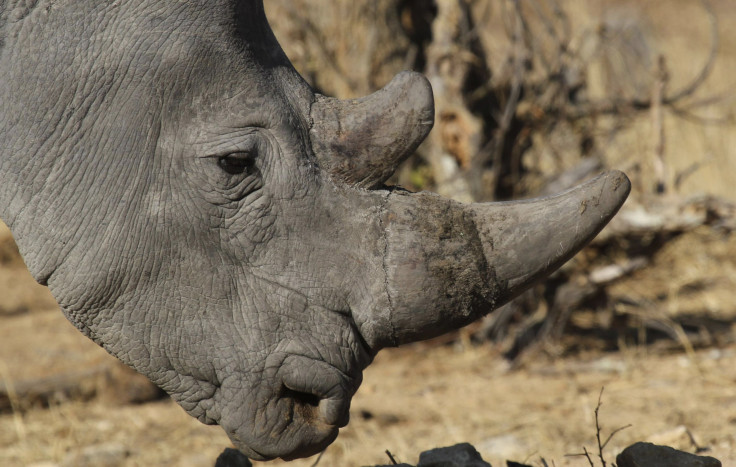Zimbabwe Plans To Dehorn At Least 100 Rhinos To Thwart Poachers

In what is being perceived as a last ditch effort to curb rampant poaching, wildlife authorities in Zimbabwe have announced plans to dehorn 100 rhinos in the state-run parks across the country. Authorities at private game reserves will be given the option to either dehorn the 600 rhinos that currently reside there, or increase security.
"Our target is to dehorn every single adult rhino and to ear-notch the young ones for record-keeping,” Lisa Marabini, director for the conservation group Aware Trust Zimbabwe, told Agence France-Presse. “Poaching is a very serious problem in this country. This [dehorning] will act as a dissuasive measure and reduce the potential reward for poachers.”
Poaching of rhinos, which has witnessed a surge in recent years, is fuelled primarily by the demand for their horns among clients in China and Vietnam, where the horns are believed to possess medicinal properties.
In Zimbabwe, at least 50 rhinos were killed last year — more than double the figure for the previous year. However, this number pales in comparison to the rhinos killed in South Africa — a nation that’s home to 83 percent of Africa’s rhinos. In 2015, a staggering 1,175 rhinos were poached in the country.
Most rhinos in South Africa are of the white variety, while Zimbabwe has predominantly black rhinos, which are smaller, much rarer and are currently classified by the World Wildlife Fund as critically endangered.
“Our strategy is to try and save the rhino, if the poachers know that the rhino at National Park here does not have horns, he is unlikely to come here and kill it,” Cephas Mudenda, a board member of the Zimbabwe Parks and Wildlife Management Authority, reportedly said last week. “The intention is to cover the whole country by year-end if all goes well.”
However, questions are still being raised over whether dehorning is really effective in curbing poaching.
The U.K.-based conservation group Save the Rhino states that the dehorning surgery is not only a risky procedure, it is also an impermanent solution to the problem of poaching. According to the group, in the early 1990s, majority of dehorned rhinos in Zimbabwe’s Hwange National Park were killed just 12 to 18 months after being dehorned.
“Why do poachers continue to target hornless rhinos? This is often attributed to the stub of horn that is left after removal,” Save the Rhino notes. “Current dehorning is estimated to remove 90 percent and 93 percent of horn mass in male and female white rhinos respectively. So during any dehorning exercise a stub of horn will remain: although poaching is made less profitable, the sad reality is that poachers will still kill for a horn stub due to its high value.”
© Copyright IBTimes 2025. All rights reserved.






















